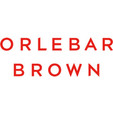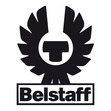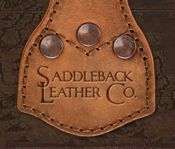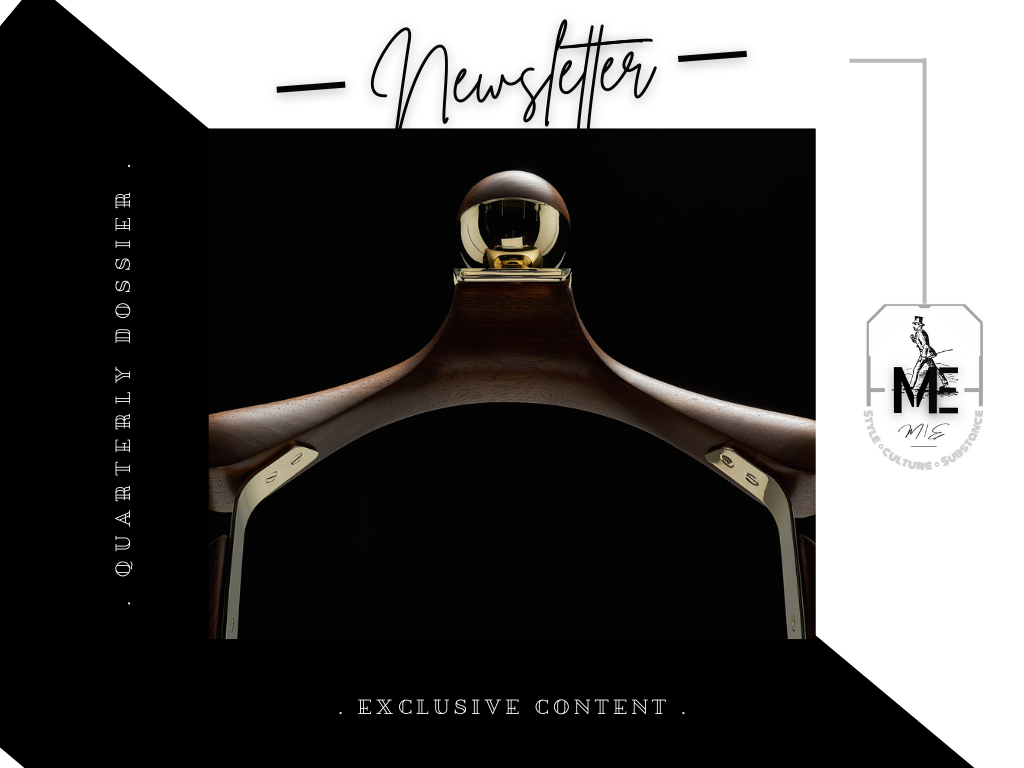
But, where did it truly originate, why (and how) should you wear one, and what should you look for if you are dead set upon investing in the true-blue genuine article?

A self-indulgence in subtle luxury that in stylized form refers to any fine, lightly-coloured, (ideally hand) woven straw hat fashioned from the vegetable fibres (i.e. the ‘coggolos’) of the Toquilla palm plant (in a process that can last upwards of eight months), it warrants immediate note that the legendary Panama — or sombrero de paja toquilla — calls Ecuador (rather than Panama) its spiritual home, a place wherein its journey first began and continues to traditionally unfold to this day.
Misnomer’s and origins aside, the hat in itself (which was once considered the most powerful item of clothing at one’s disposal, Panama or otherwise) is both a statement-making tool of transformation and a utilitarian marvel that effortlessly enhances ones style in both form and function. As such, it now operates almost exclusively as a distinguished extension of our sartorial persona’s rather then a presupposed social apparatus of civility and decorum (‘hat honour’ it was once called).
Be that as it may, and whether expressively worn rakishly turned down at front and up at back or nattily rolled over all around, the Panama hat continues to serve the same practical role it was originally purposed for with the added bonus of an elegantly fashionable cultural cachet now being enticingly attached to its reflective character.
Together, you could say that its unique characteristic marriage of style and substance essentially ensures that we will truly never be rid of its illustrious presence nor its occasional utility as the endearing tool of gentlemanly (rather then social) decorum, sartorial nicety, and seasonal necessity that it has become.
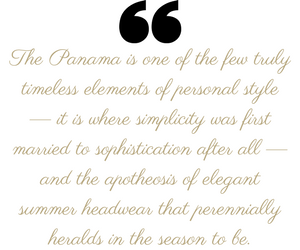
Romantic, masculine and silky (almost like a fine linen) to the touch, it should go without question why its elegantly shaped and lightweight form, full range of coverage, and tightly woven (yet breathable) structuring have rendered it the optimal selection come hot, humid, and sunny weather.
Being more versatile then a baseball cap (which looks out of place with tailoring), more stylish then a boater (which is rather outdated), and more well-travelled and seasonally appropriate then a flat cap (which can be quite suffocating to wear in the summer), its ability to recapture the hearts of each successive generation without fail should be applauded whilst its firm sense of purpose and illustrated history of bridging continents, traditions and cultures celebrated.
Indeed, you could say that the Panama is (and likely will always remain) one of the few truly timeless elements of personal style — it is where simplicity was first married to sophistication after all — and the apotheosis of elegant summer headwear that perennially heralds in the season to be.
As such, and in both enduring quality and character, it has dutifully earned its vaunted position upon an elevated style pedestal due in no small part to its transcendent capability to continually thrive within an industry that otherwise lives and dies upon the ideal of constant change and upheaval.
I for one certainly think not, especially if you are of the sort who prefers a refined aesthetic that can be framed in the same shadow as some of the most revered style icons in menswear lore — Messrs Gandy, Redford, Connery, Roosevelt, Hemmingway and (Tom) Wolfe (to name but a select prominent few that come to mind) — whose seasonally appropriate, laid-back and elegant sartorial élan in a Panama remains inimitably desirable yet forever channeled in spirit to this day.
It is, as such and inarguably, a hat that can effectively see you through life as it did (does) with those gents with equal grace, ease, panache and style in hand; Or, and to put it rather bluntly it is the perfect warm weather accoutrement in which you should take to wearing as if it were a birth right and adoring for its distinctively subtle, self-indulgent luxury.
Howbeit, here’s a contentious timeline of its history, a style + buying guide, and why (if you need more reason) the fine Panama should be your one and only true port of (hatting) call this summer (or any other for that matter)…
Holding true and fast to its traditional form and styling since conception, its airy yet strong structuring has provided ample protection from the sun for eons erstwhile its supple and refined body, accommodating and flexible form, and surprising resilience yet pristine persona continually prove to be what you could call the 'icing on the cake' for the sartorially-inclined.
As such it is, as I prefer to think of it, at once a unique piece of art (i.e. a masterpiece of artisanal craft) and the functional apotheosis of elegant summer hatting (or headwear).
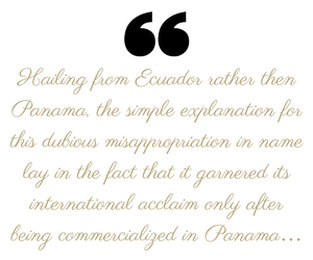
Disputable ancient history aside, it was not until the dawn of the early to mid 19th-century that its importance and style iconography became enticingly fruitful and worth note as European colonialists, explorers, passerby’s and expats looking to settle in the New World chanced upon it and subsequently sought refuge in its cooling form whilst living in the humid and muggy tropical locale that rests at the north-eastern tip of South America now known as Ecuador.
Since then opportunistically marketed, sold, altered and referenced throughout time under a variety of straw hat guises (Optimo, Fedora, Planter, etc.) as well as monikers such as ‘toquillas’, ‘Jipijapas’, and today the ‘Montecristi or Cuenca, the Panama hats spiritual home nevertheless remains something that not many may not know actually stands in stark contention to its iconic ’Panama hat’ distinction.
As previously mentioned hailing from Ecuador rather then Panama, the simple explanation for this dubious misappropriation in name lay in the fact that it garnered its international acclaim and popularity only after being commercialized in what was at the time the nearest global port of export and trade: Panama.
This, of course, simply accounts for why the Panama misnomer was christened (and stuck) but none of the reasoning behind the Ecuadorian masterpiece's actual journey to Panama in the first place.
Howbeit, should you be interested in tracing its vast and contentious history it is likely that a variety of fanciful tales that claim to hold the truth of its eventual popularity would cross your path. And seeing as history is something often rather quite debatable in its merit and most often written by the victors, conquerers or simply opportunists looking for a piece of the pie (so to speak), the actual seminal moment it which the Panama hat became an international wunderkind is one regularly contested and continually up for debate.
All that having been said, on one side of the summer crown making debate rests what you could call the most recent and relative tale of FDR — that being President Franklin Delano (Teddy) Roosevelt — famously donning and doffing his newly acquired straw hat during a promotional visit to the construction site of the Panama canal in 1904 wherein the media subsequently saw fit in dubbing his straw (jipijapa) hat the ’Panama’. Being a man of considered merit, clout and fashionable fortitude at the time, it is often said that on that fateful occasion the Panama hat in name, tropical wardrobe staple status, and iconography was cemented into lore.
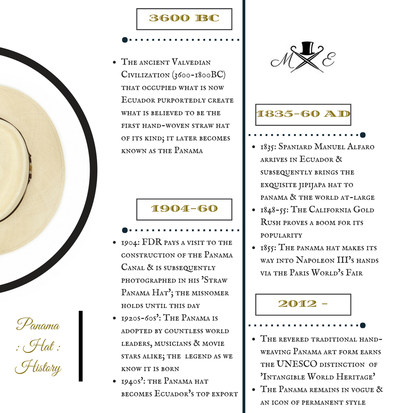
However, and if truth be faithfully told, the pivotal moment in which I would wager upon that led to its eventual success (and its curious misnomer) belongs in the hands of a Spaniard by the name of Manuel Alfaro who was an exiled 39-year-old military officer that arrived upon the shores of Ecuador in 1835 and made Montecristi — the ancient spiritual home of the Panama — his port of call and eventual home.
History, as they say, was made on that day as fate seemingly brought together the (purported) birth place of the artistic Panama hat hand-weaving tradition, the finest Panama making outpost in existence, and the man who would eventually be responsible for introducing it to the world stage at-large.
But, what drove Mr. Alfaro to Ecuador in the first place?
Well, it is said (but should be taken lightly) that he ventured to the area as consequence of simple word of mouth of Spanish conquistadors (that had been passed down generations) who it is said remarked upon the presence of an exquisite straw hat (far from being called a Panama at the time) of peerless quality when passing through the area during the 16th century.
With the idea in mind to monopolize such a luxurious and immaculate creation, he soon cast himself adrift in the New World wherein he took to developing, marketing and then exporting the beautifully woven straw hats he had been previously informed upon with haste. Initially the hats (which were all hand-woven by local artisans and not of his own making) proved popular among sailors, travellers and expats from various nations alike who passed through the area, but Alfaro had a grander (international) vision for his adopted crown of choice and soon thereafter began scaling his production by means of organizing weavers and setting up straw plantations to both secure his supply and satiate the increasing demand. Howbeit, it was not long until he was able to form his own export business and launch thousands of hats up north to the bustling seaports on the Isthmus of Panama.
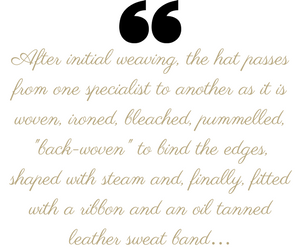
This, of course, was all to the benefit of Mr. Alfaro’s straw hats whose sales numbers quickly skyrocketed as a great many of his light and jaunty creations where sold for their peerless ability to be rolled up for travel as well as to provide ample shade and protection against the beating sun that plagued workers for hours on end during a typically arduous day on the job in the now Sunshine state.
Consequently his fine straw toppers soon thereafter were formally re-christened as ‘Panama’s’, a misleading moniker that persists to this day that came to be not because of their spiritual home being touted but rather because of the hats immediate commercialization in the Panamanian region being foremost above everything else.
Labelling aside, so popular had the ‘Panama’ become during the initial stages of the rush that by the early 1850s’ Mr. Alfaro was purported to have been exporting more than a quarter of a million hats per year. Already quite wealthy and well off, his business was given even further boon at the Paris Exposition in 1855 wherein the aforementioned Mr. Raimondi proved a key figure in the introduction of an extremely fine hand-woven Montecristi Panama to HRH Napoleon III. Instantly smitten by the quality of his paper light gift of luxury, Napoleon consequently fell head over heels for it and wore it everywhere to the effect of the it becoming extremely in vogue and quintessential during the seasons of spring and summer first throughout France and subsequently the greater parts of Europe.
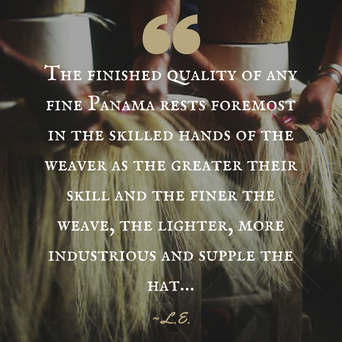
This previously touched upon event is the one in which many themselves would wager and hinge both the continued success and eventual cementing of its iconic modern day staple status onto. Sparking mass publicity and interest at the time as consequence of his vaunted position in office, the infamous photo of FDR wearing a traditional Optimo Panama (which can be seen above in the introductory graphic to this section on its history) was plastered across newspapers worldwide and accompanied with the headline ‘Roosevelt’s Panama hat’ being used with artistic liberty from one publication to the next.
The result: an immediate resurgence in Panama hat popularity and wide acclaim not only in the U.S. but from Japan to London seemingly overnight.
At the same time of Roosevelt becoming arguably the first (unbeknownst to him) international ‘tastemaker’ (or influencer as we have dubbed it in the contemporary age), the Panama had concurrently been on the verge of becoming internationally beloved for not merely its functional capabilities (which it was renowned for during the California Gold Rush) but more so for its attractive styling, cultural cachet and occasional versatility.
Unsurprisingly, a whirlwind love affair quickly ensued the world round with all manner of celebrities, world leaders, style icons and regular gentleman alike falling in line and ascribing to its status symbol positioning and inspired form.
Slowly gaining a place hold everywhere thereafter, something which can be attested to in the fact that by the 1940’s the Panama hat had become Ecuador’s top export, its fedora variation soon earned de rigueur status as the quintessential gentleman’s hat of choice during summer months as well as in sultry climes and (most importantly to its ever-burgeoning popularity) both classic cinema and television.
It’s legend had by this juncture been fully established and cemented, yet its journey was far from seeing its conclusion.
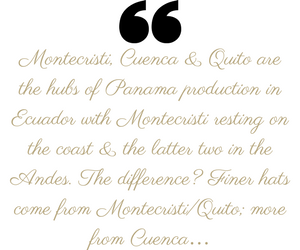
But what differentiates the three you may ask?
Well, the first two have always specialized in small, bespoke quantities of traditional hand-woven works of art whereas Cuenca is home to a variety of larger companies who now manufacture hats in the thousands to sell world round. As such, if you were to come across a hat labeled as a “genuine Panama hat” today in a standardized size (such as S, M, or L) the likelihood is that it hails from one of Cuenca’s many modern factories rather then an artisan in Montecristi or Quito.
All that having been said, it is rather quite interesting in note that the beloved Panama hat has been left relatively untouched and unaltered in structuring as well as popular styling over its prolonged lifespan (staying ever much the same now in style as it was 200 years ago). However, what it has undergone is an evolution in adaptive character and social utility as it has been repurposed from being but a simple peasants hat into many things from that of a landlocked life buoy for California Gold Rush prospectors and a signature sartorial mark of post-colonial Old-World ex-pats through a beloved crown of silver screen icons during Hollywood’s golden era and finally a quintessential seasonal staple for classically styled modern gentlemen, travellers and bohemian urbanites alike as we speak.
Indeed, the luxurious Panama (no matter its provenance) continually illustrates both the functional and fashionable importance of headwear in society today erstwhile being as ever as much charmingly alluring and characteristically refined, functionally fit, and a timeless symbol of style as it was during its bygone heyday.
As such, it is without question a fine crown fit for a king (of which there have been many to wear it) whose exquisite marriage of form and function bespeak unto the reality that it remains one of the finest (and smartest) investments a gent (or even lady) can make in his or her lifetime.
Just ask Messrs Connery, O’toole, or Hemingway, or perhaps consult the mountains of photographs (and Instagram posts) of gentleman both classic and contemporary who have adopted it in kind and I’m sure they would certainly tell you the same thing…
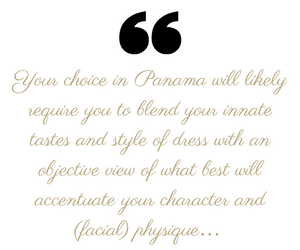
Celebrated world-round and widely considered the quintessential (i.e. optimal) summer hat of choice for a gentleman of style due to an occasional utility that can veer smart or playfully casual at a moments notice, a timeless and laid-back form of innately imbued elegance that is simply ageless in its wear, and a proven range of functionality that is leaps and bounds above the serviceable realm of any commonplace baseball hat, cheap paper trilby, or linen/cotton newsboy cap, the Panama is indeed a true marvel and considered choice for one-and-all (male of female; peacock or traditionalist).
Eternally synonymous with not only summer but also a fine contingent of tropical venues, holiday locales, and beach resorts from the Atlantic through to the Pacific (the sun truly never sets on the Panama), it goes without saying that its reach and appropriateness in wear is vast insomuch as it being able to be tastefully sported anywhere the sun shines through — north, south or directly upon the equator.
But, what differentiates one style from another and which should you gravitate towards?
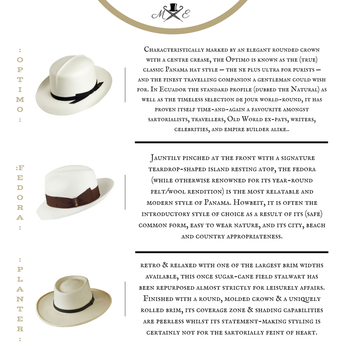 — The Three Most Popular Panama Styles --
— The Three Most Popular Panama Styles -- Having said that, and respective of personal fancy or of properly accentuating ones silhouette, the three most popular options on the market are (1) the comforting and relatable mid-brim fedora form (for city wear); (2) the classic domed Optimo style (the happy-medium); (3) the wide-brimmed ‘plantation’ or gambler’ variation (which is popular for lounging in when in the countryside or frequenting a vineyard for example).
Each capable of being elegantly paired with any and everything (save for athletic/athleisurewear) from white dress chinos and lightweight tropical grade shirting for a subtle Riviera chic aesthetic through louche seasonal tailoring (linens, cottons et al.), smart-casual separates (i.e. a knit polo + linen trousers), and leisure or resort wears (shorts included) of your preferred enterprise, it would not be a stretch to state that the Panama can be both an able tailoring partner and leisurely mistress in its finest hour.
Taking that to heart, you could say that the Panama will prove itself considerably useful whether you find yourself disembarking from a catamaran in the Adriatic, lounging at a cafe in Havana, sauntering through a vineyard in the south of France, or combatting the heat in either your own backyard (given you have one) or perhaps some far-flung tropic locale that you dream about frequenting at your leisure.
| |
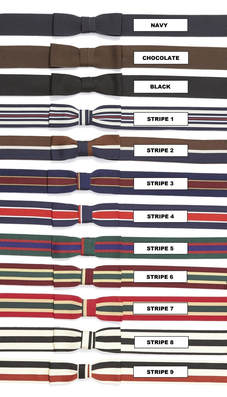 A sampling of possible Panama hat band style's
A sampling of possible Panama hat band style's How so?
Because it provides ample shade and protection like no other while being readily capable of being worn as you see fit from the office to the beach. Moreover, it is a style of hat that is both comfortable and familiar (you can thank many a classic movie and artistic turn for this), one with a true sense of enduring merit and history about it that has become at once a reflectively endearing mark of genteel style, an intoxicating prospect that constantly beckons as if it were a siren of fictional Odyssey lore, and a romantic vestige of a bygone era.
Personal characteristic draw withstanding, my advice would be to opt for one of the aforementioned three Panama hat styles — fedora (for city wear), plantation (for leisure), Optimo (for the best of both worlds) — if you are looking for an entry level hat to find immediate solace in.
As for myself, my tastes most often typically err towards the traditional Optimo with which I tend to prefer wearing alongside the likes of white (or off-white) dress chinos (or perhaps denim), suede tasseled loafers, classic Ray-Ban Clubmasters, a pastel coloured linen-cotton sports coat or blazer, and a white (breezy) linen-cotton collared button-up for a simple yet refined Euro chic look that would be at home no matter where in the world you find yourself cutting a sartorial dash during the season (for yours truly that is Canada).
: The Takeaway :
The Panama is a smart and timeless investment in style with a surprising utility in wear that renders it capable of tastefully topping off any seasonal look save for those of the sports and athleisurewear (i.e. joggers, hoodies, bombers, any sneaker aside from pristine white/off-white, et al.) variety.
Now as for a touch of inspiration, here’s three exclusively curated looks to experiment with as you see fit (Panama included) all summer long that range from smart through casual, fedora through Optimo…
| Linen-Silk Havana Stripe Suit (Suit Supply. $689) | Polka Dot Tie (The Tie Bar. $19) | Double-Cuff Contrast Collar Dress Shirt (Thomas Pink. £90.00 ) | White Tipped Pocket Square (Tie Bar. $10 ) | Wholecut Oxfords (Paul Evans. $499) | Watch (Orient. $132) | Dress Socks (Corgi. $28) |
| Double-Breasted Sports Coat (Reiss. $360) ~ White O.C.B.D. (Gant Rugger. $117) ~ Striped Scarf (Brooks Brothers. $80) ~ Salmon Chinos (Scotch & Soda. $88) or Pink Smart Trousers (ASOS. $35) ~ Suede Kiltie Loafers (Salvatore Ferragamo. $150) |
| Medium-Weight Denim Shirt (J. Crew. $115) ~ Cotton Crewneck T-Shirt (Everlane. $16) ~ Dark Rinse Denim Jeans (Scotch & Soda. $175) ~ White Sneakers / H&M Derby (Chuck Taylor. $180) ~ Bandana Bracelet (Topman. $13) ~ Tortoiseshell Sunnies ( John Varvatos. $95) |
| (I) Borsalino. $325 ~ (II) Marks & Spencer. $110 ~ (III) Brent Black. $500+ ~ (IV) The Panama Hat Company. $100 ~ (V) Lock & Co. £250.00 ~ (VI) La Marqueza. £165.00 ~ (VII) The Panama Hat Company. $100 ~ (VIII) Frescobol Carioca. $260 ~ (IX) Borsalino. $165 ~ (X) Marks & Spenser. $100 ~ (XI) J. Crew. $85 ~ (XII) Optimo Hats. Price At Request |
| |
| A tiptop investment that delivers in spades in both form and function, the Panama hat is a fine option for those with an appreciation for iconic style, understated luxury, timeless aesthetics, and traditional artisanal craft. Left unadulterated in form since its introduction to the world stage (in the early 19th century) and now beloved from Hong Kong to Havana, summer simply would be a shell of itself if it were to be fashionably deprived of the Panama’s quintessential presence as it is at once both a sartorial harbinger and perennial symbol of the season. |
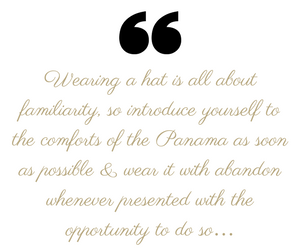
Having lived many a life, answered to a variety of name’s — from sombrero de paja toquilla (i.e. hat of toquilla straw) and jijipijapa through Panama — and dutifully served as the unwritten hat de rigueur for some of the most iconic figures to surface during its storied existence, the humble yet worldly renowned Panama hats crisp and pristine character continues to shine through to this day whilst its reign as the (seasonal) crown of choice for gentlemen of style and substance remains relatively undisputed.
Insofar as much, I dare say it can comfortably rest upon its vaunted laurels as the functionally revered pillar of the season that it is rather than a mere device of superficial (sartorial) artifice that so many others are.
Artistically speaking a masterpiece of traditional Ecuadorian craft that in style is sympathetic to the discerning tastes of the minimalist whilst in character expressively receptive to the elegant desires and practical needs of the refined gentleman at heart, it is arguably the perfect hat, a headwear option that is always on form, an enduring beacon of permanent fashionability, and a bonafide summer MacGuffin for the stylishly inclined all the same.
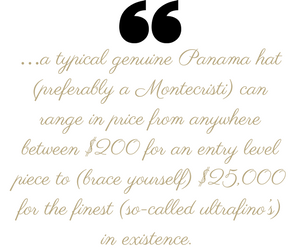
What’s more, for each of us it can become a uniquely stylized subtle statement-making piece that can be customized to suit our every passing fancy or desire, one that I have personally grown extremely fond of and will wear with confidence throughout the duration of my lifetime.
Howbeit, and in regards to its overall character as well reflective style, I cannot think of a more reliable or exquisite companion (nor perhaps a best friend for life) then the fine straw topper from Ecuador that has defied the odds (and its origin in name) on route to becoming forevermore enshrined into sartorial lore as simply the Panama hat.
Strong yet soft and forgiving, it can be completely rolled up without any residual effects and packs well whilst being synonymous with adventure and daring yet refined as well as sophisticated yet casual all the same.
A fine topper and sartorial crown befitting not only the modern gentleman but a King himself indeed!
So, here’s to dipping your fashionable toe into the renowned Panama hat pool and living an indulgent life framed by its simple luxury, laid-back style and breezy comforts whether you find yourself north, south or directly upon the equator this season (holidaying or not)…
Share your thoughts, musings, and anecdotes…
Feel free to share below if the inclination arises…

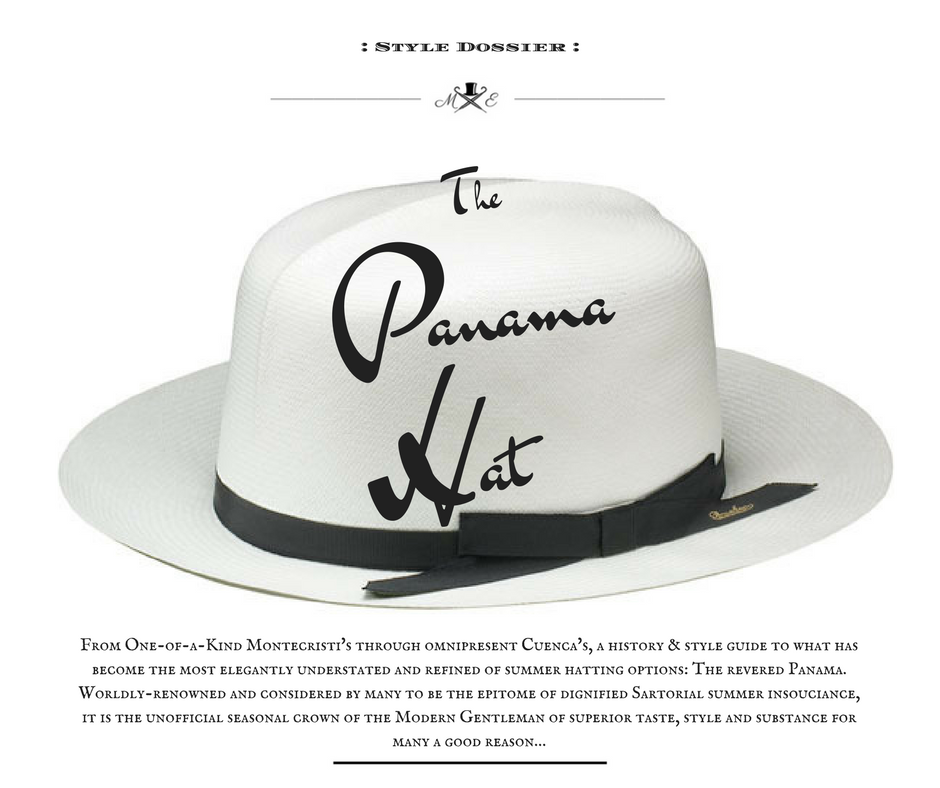







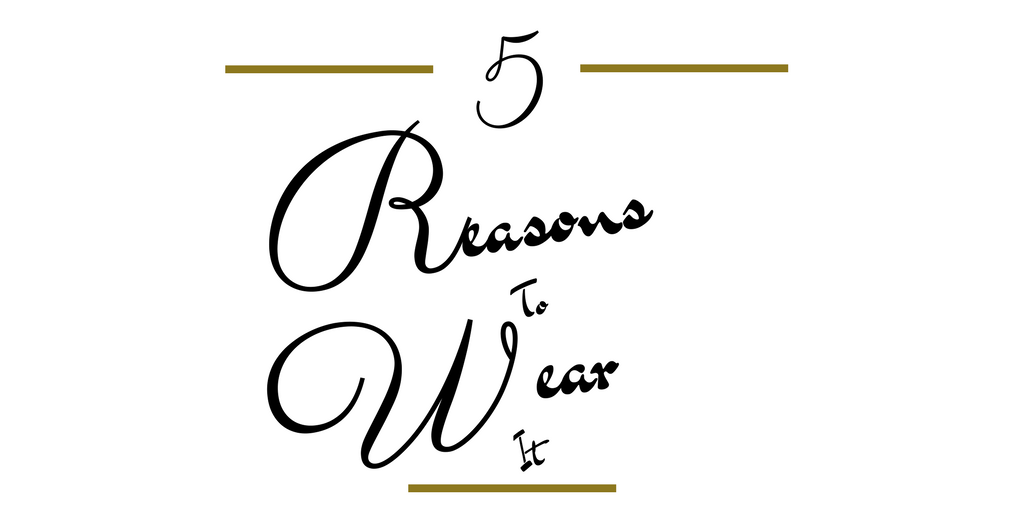
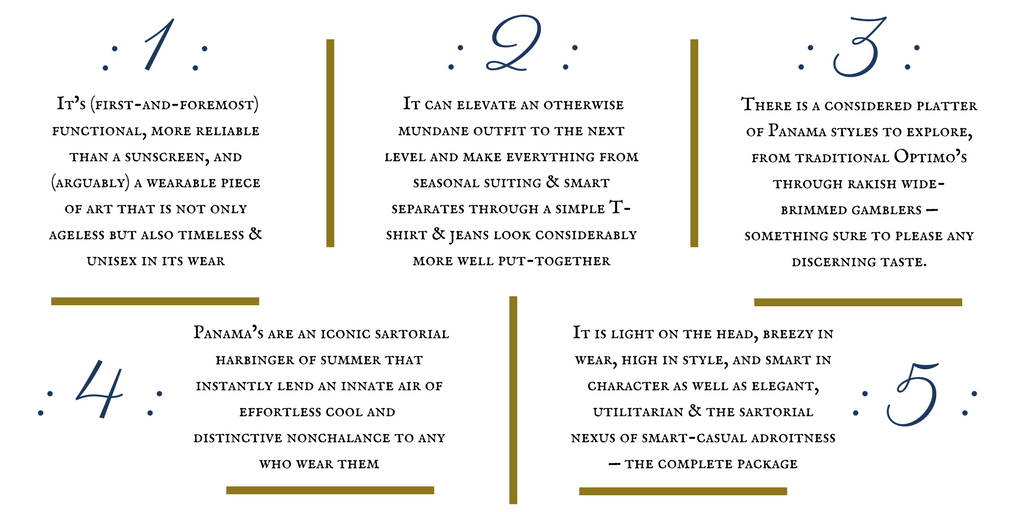

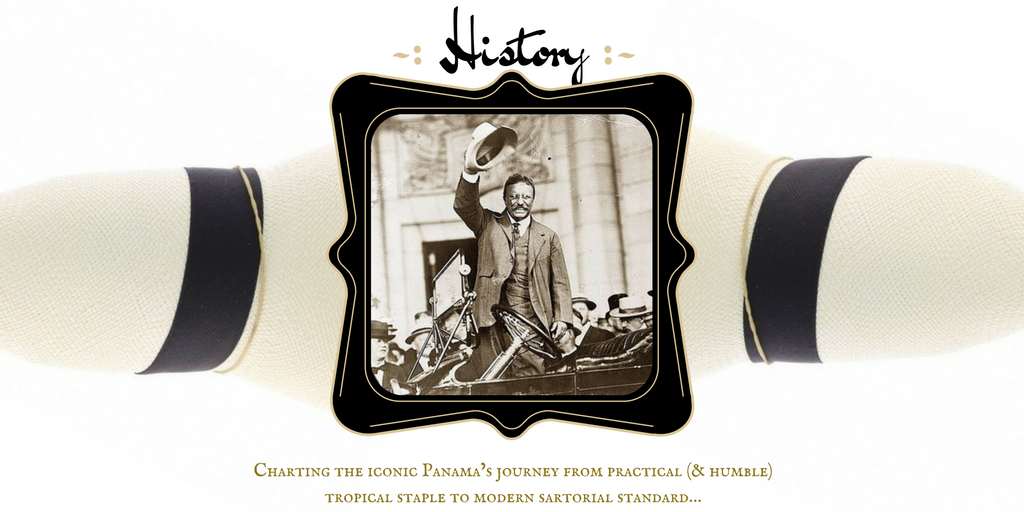

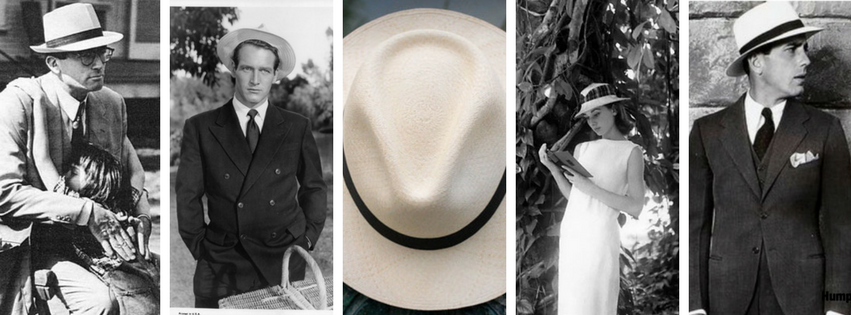

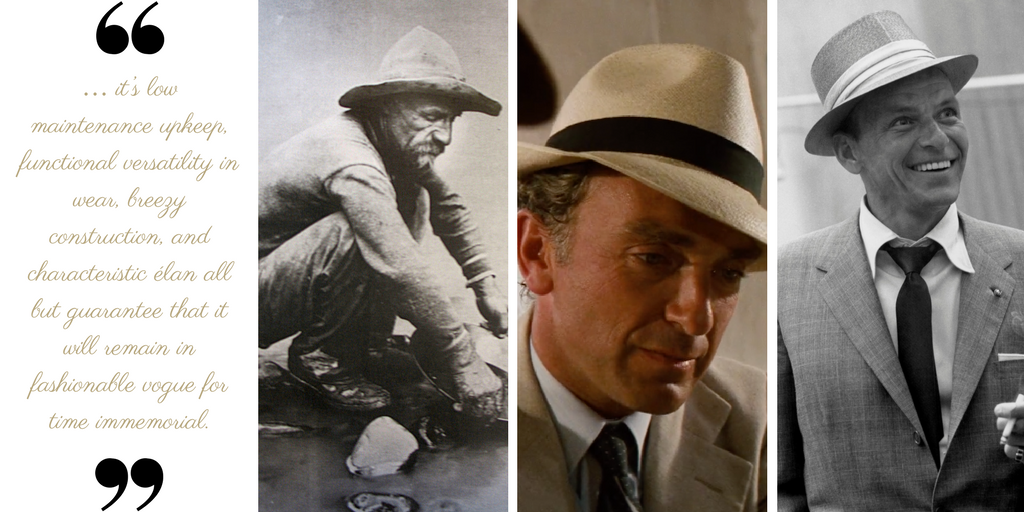






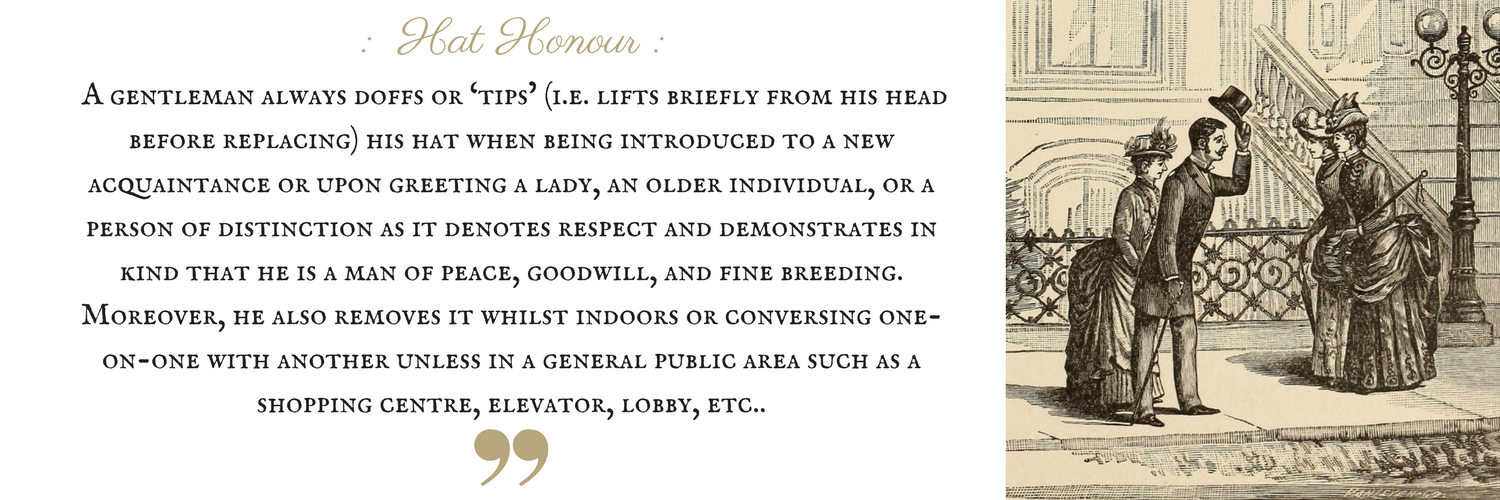

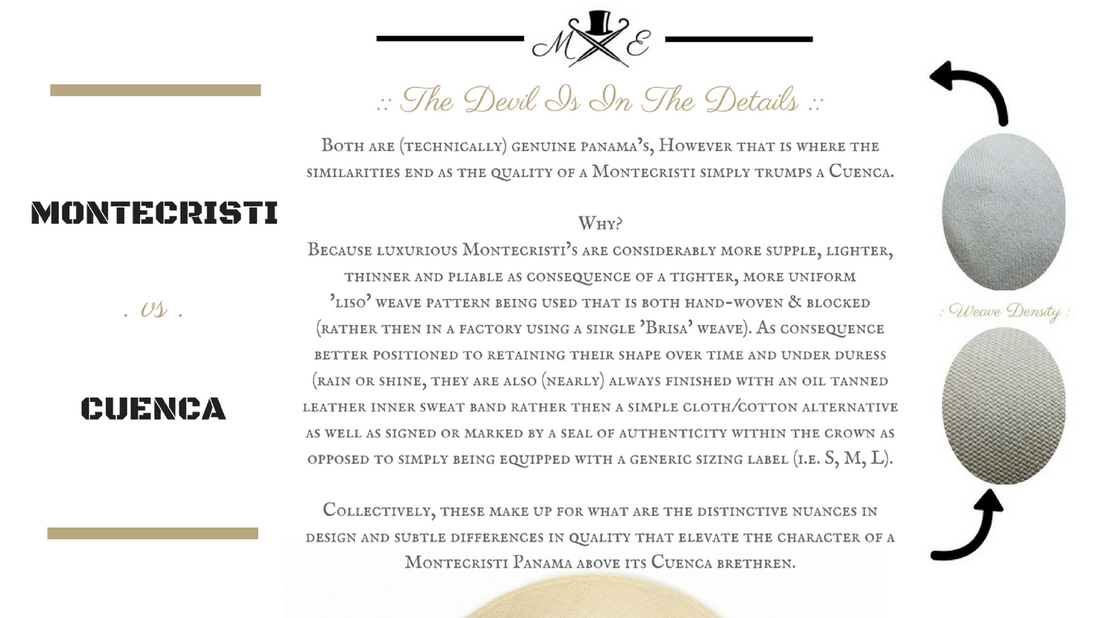

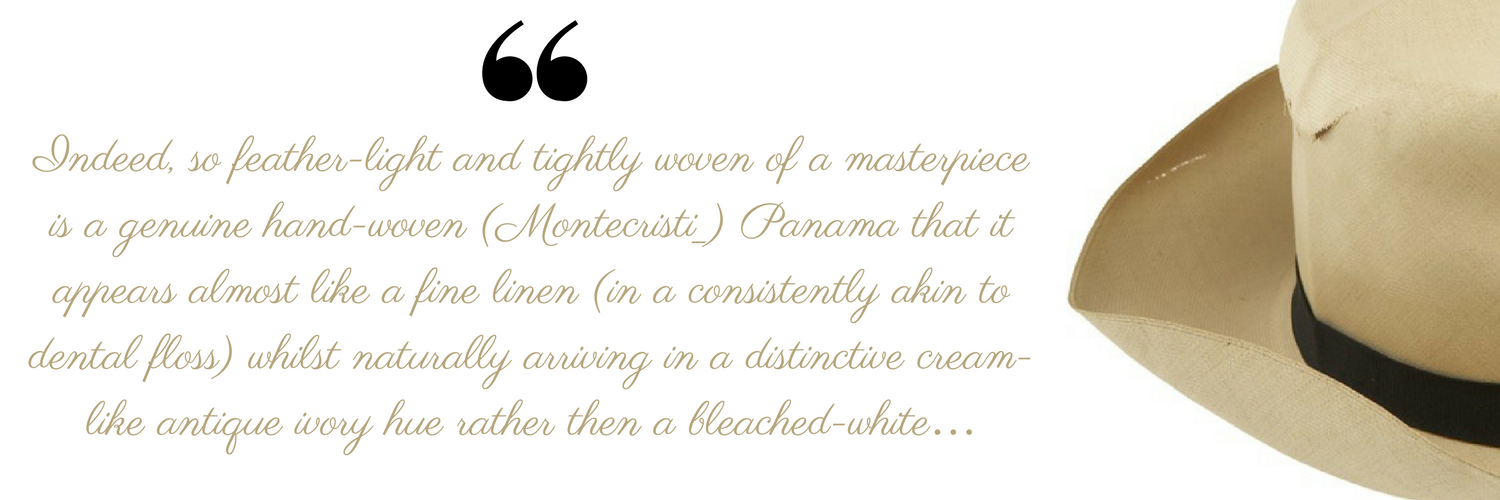


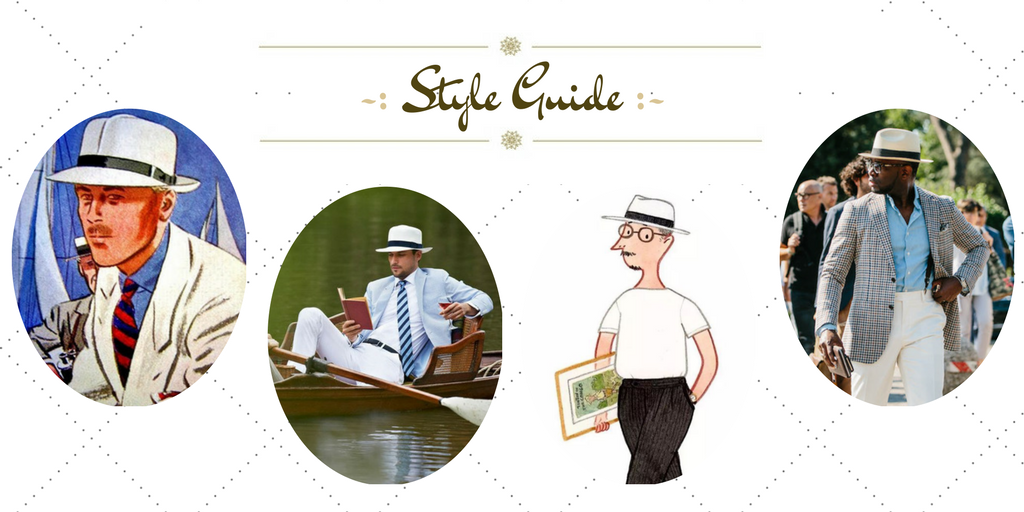


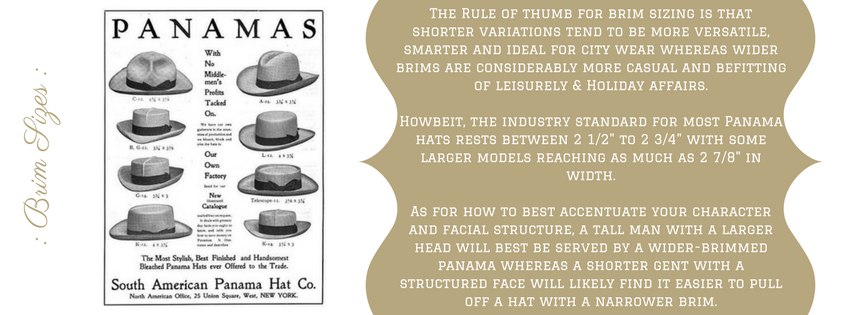





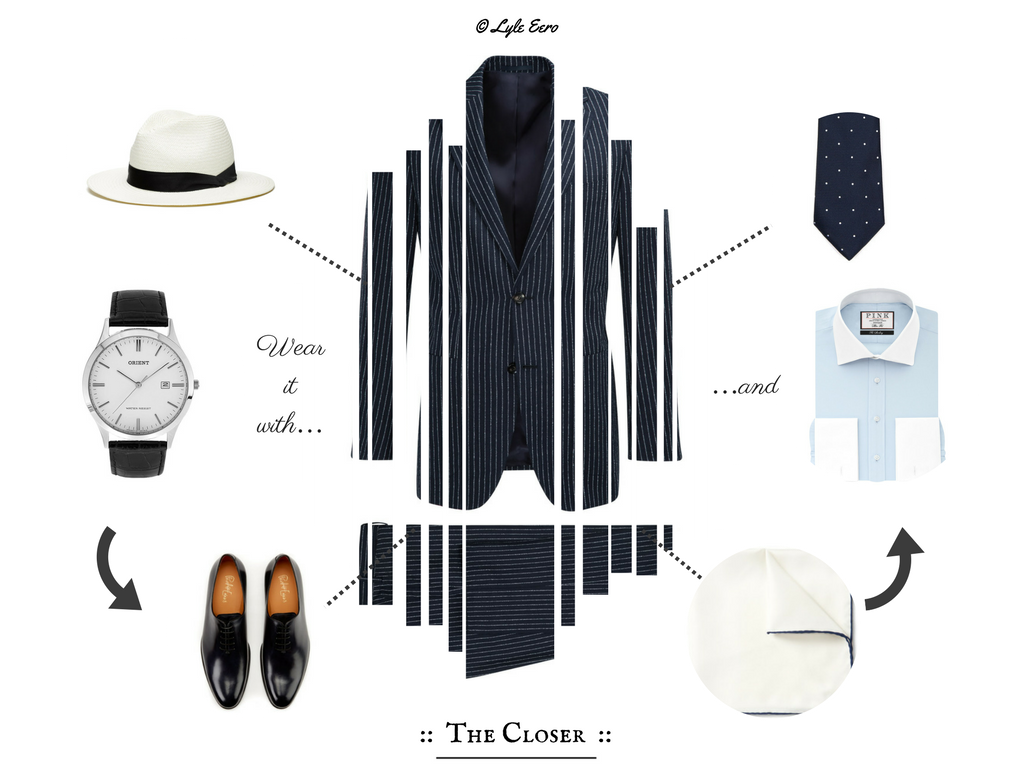

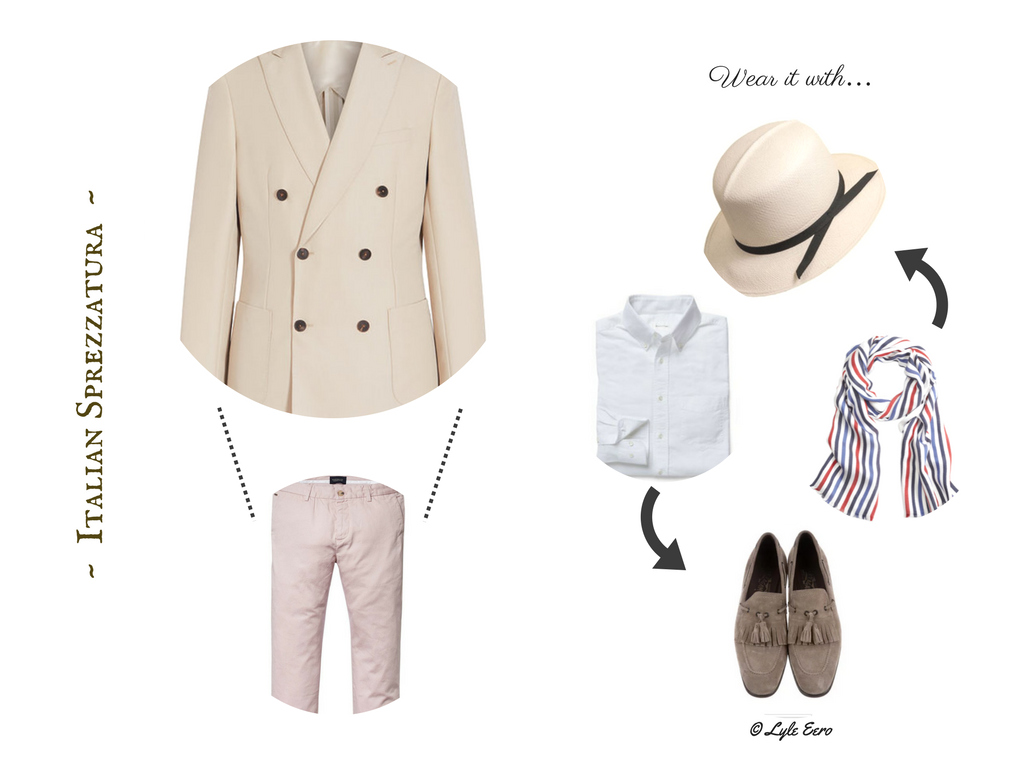
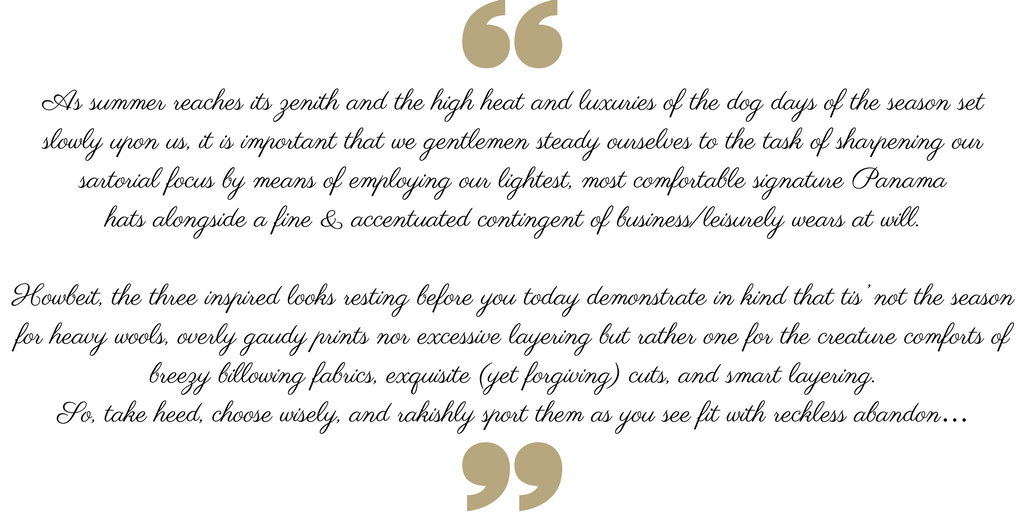
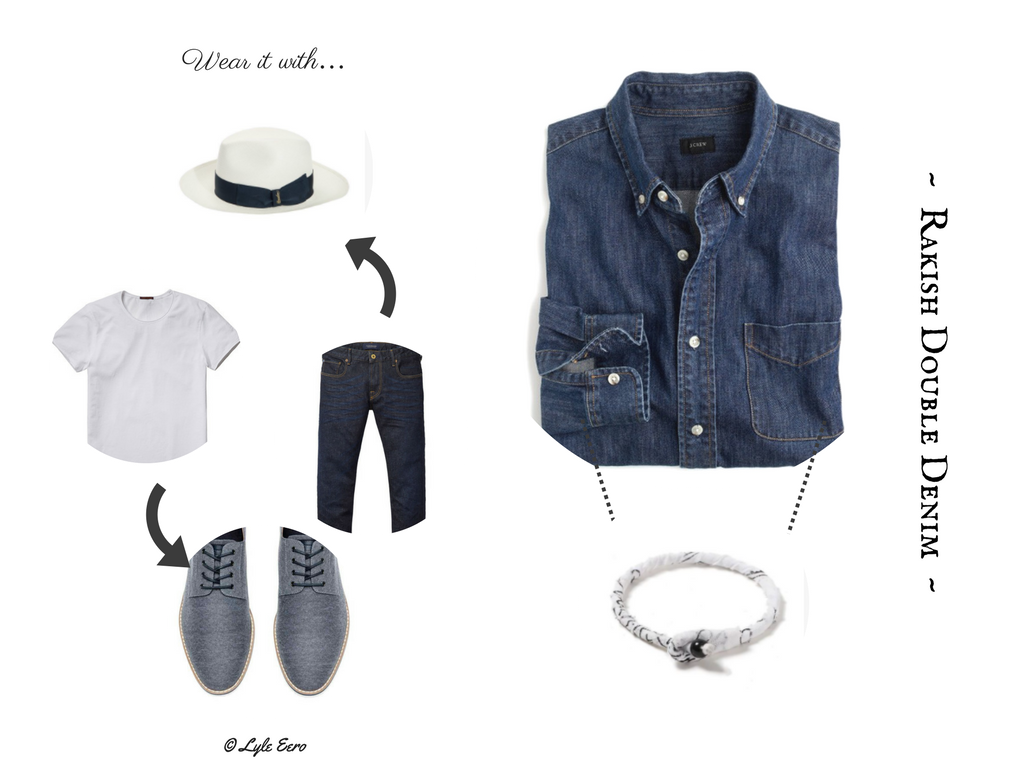




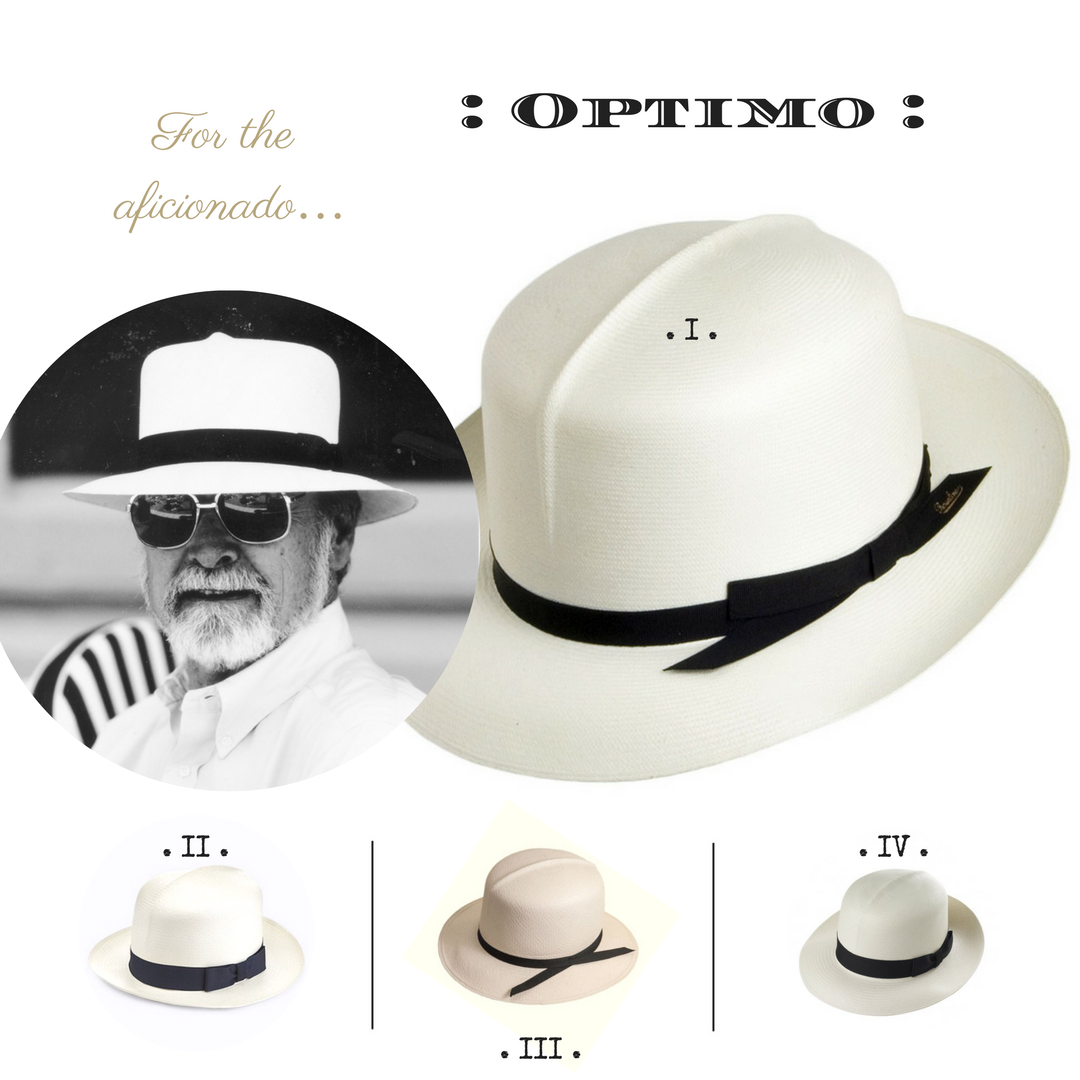







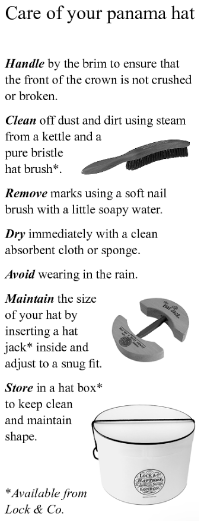








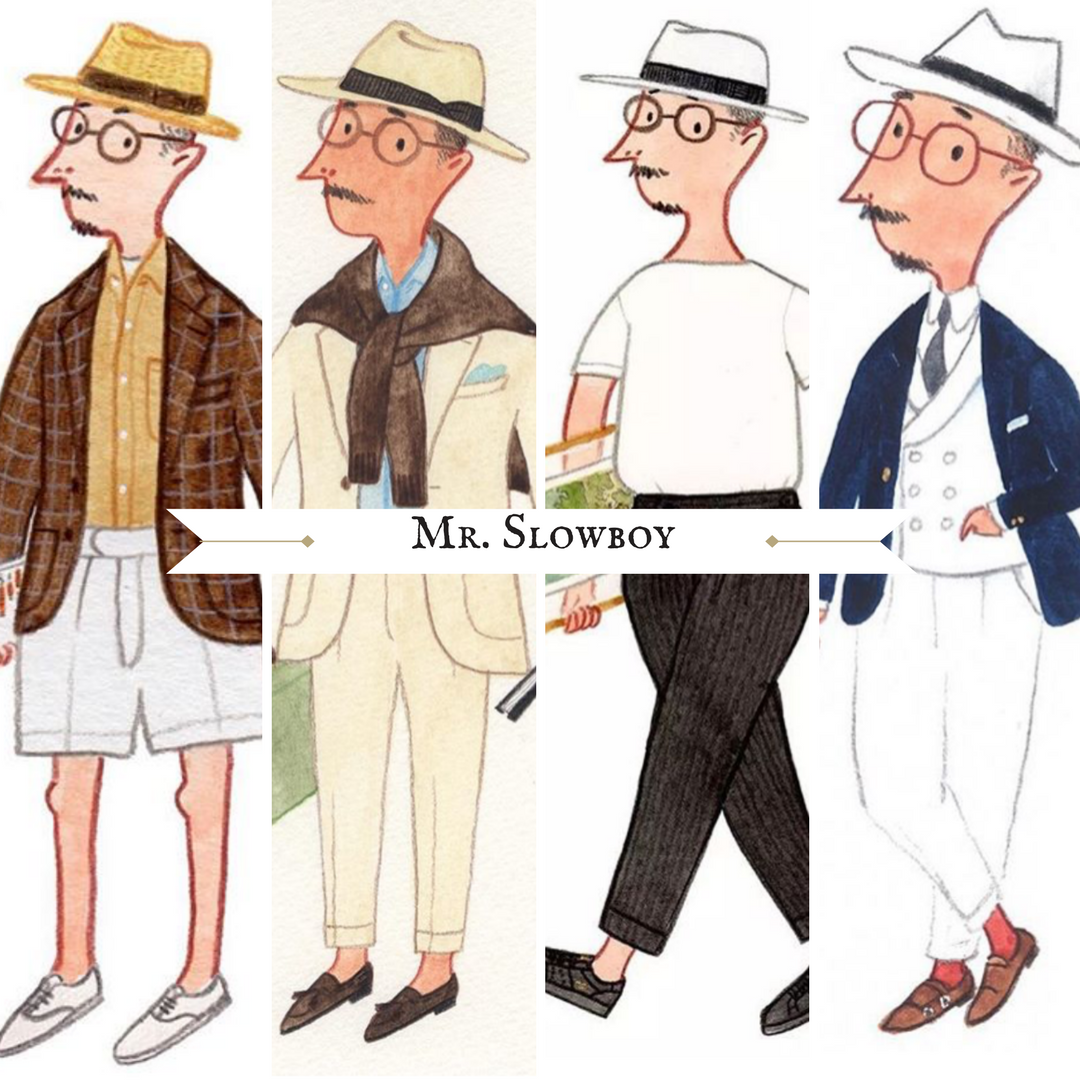



 RSS Feed
RSS Feed



